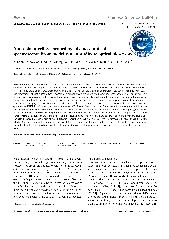摘要
Research in biology and medicine is a rapidly expanding field incorporating some of the most fundamental questions concerning structure, function, and purpose. The forefront of new research demands access to advanced techniques and instrumentation capable of probing these unanswered questions. Over the past several decades, nano-scale materials and devices ranging from quasi-one dimensional quantum dots to two dimensional graphene sheets have been engineered and have found applications in nano-bio imaging and spectroscopy. In this review, the incorporation of nanomaterials into three influential spectroscopic and microscopic techniques including fluorescence microscopy, surface plasmon resonance, and sum frequency generation will be introduced. Fluorescence imaging has visualized nanomaterials as compliments or replacements to comparable organic fluorphores, act as a quencher for FRET-based sensing, and serve as a nanoscaffold for molecular beacons. Their versatility in coating materials makes nanomaterials an excellent targeting molecule for any cellular macromolecule or structure. In addition to the targeting capabilities of nanomaterials in fluorescence imaging, surface plasmon resonance has incorporated nanomaterials for applications in signal enhancement, selectivity of target molecules, and the development of more refined and accurate detection. Functionalized nanoparticles enhance the capabilities of sum frequency generation vibrational spectroscopy by providing unique surface chemistry which alters target molecule interactions and orientations. In summary, the incorporation of nanomaterials has greatly enhanced the field of biology and medicine and has allowed for the continual advancement of not only research but instrument development.
- 出版日期2013-7
